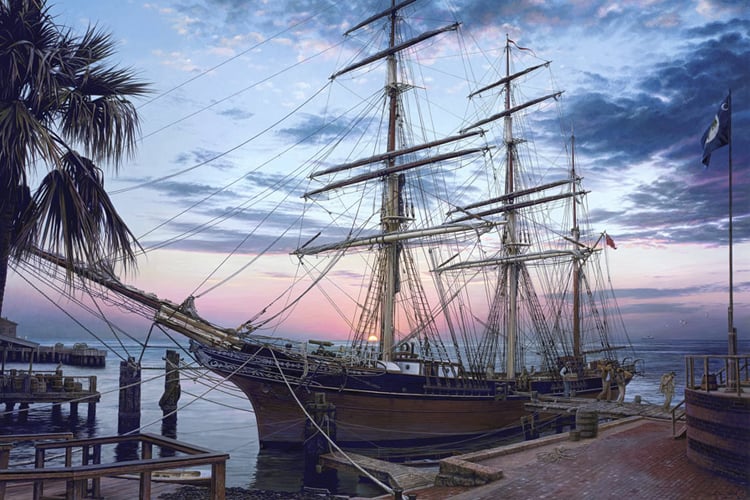Cavalier of the Sea
By the summer of 1861, President Lincoln had placed into motion his plan to isolate the secessionist Southern States by imposing a blockade of their shipping ports. The South's economy was based on "King Cotton" and trade with England and other countries. Four million English textile jobs relied on the importation of southern cotton, and in turn southern leaders would need immense amounts of arms and equipment from Europe to defeat the oncoming threat from the north. Blockade runners would become the lifeline of the Confederacy.
Before the Federal blockade was fully in place in the latter part of 1861, supplies were primarily carried across the Atlantic on sailing ships able to handle large quantities of goods. One ship could supply thousands of Enfield rifles and enough ammunition for 30 thousand troops in the field. As the blockade became more fully implemented, newer, faster and smaller steamships were utilized to elude Union vessels.
On May 28, 1861 Charleston received notification that it's port was to be blockaded and that any ship approaching the city would be warned off or seized. A fifteen day grace period was to be given to neutral ships to leave the harbor. Undeterred, Confederate leaders went into action and readied war ships and privateers to counter the threat. The exploits of these bold sailors serving in the Confederate Navy, on privateers and supply ships became greatly romanticized in the newspapers as "Cavaliers of the Sea".
Cavalier of the Sea
John Paul Strain
This Piece has been Signed by John Paul Strain

